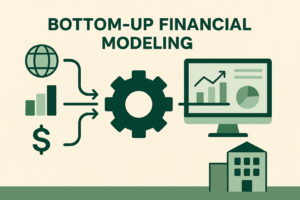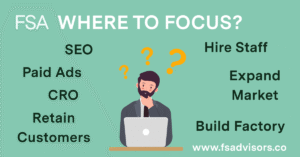
Whether You’re a Numbers Person or Not, You Need This: Financial Clarity for Every Entrepreneur
Running a business is a constant series of decisions—where to invest, when to expand, how to price your products, and more. Some entrepreneurs love numbers, finding comfort in spreadsheets and financial data. Others prefer to focus on vision and strategy, avoiding the nitty-gritty details of financial analysis. The truth? The story of your business is told in numbers—whether you’re reading it or not. Every decision, every expense, every customer interaction is reflected in your financial data. You will be more profitable when you don’t overlook the numbers and instead squeeze as much insight as possible out of them. This blog will show why cultivating your data and strong financial modeling is essential—whether you want better insights to refine your strategies or a clear framework to make smart, data-driven decisions without the complexity. 1. If You’re a Numbers Person, We Make Data Work for You If you enjoy analyzing numbers, you already understand their importance. But are you maximizing the power of your data to make better decisions? Turn raw data into real answers: You shouldn’t have to waste time manually sorting through spreadsheets. We build custom financial models that do the heavy lifting, organizing and analyzing your data for you turning insights into sound strategic decisions. See the full picture: Our models connect the dots between revenue, expenses, customer acquisition, and profitability so you can make informed decisions. Get insights faster: Instead of spending hours calculating metrics, our system is set up to deliver ready-to-use insights when you need it that help you act quickly. Example: Instead of manually tracking customer acquisition costs, our system automatically calculates trends so you can pinpoint which marketing channels provide the highest return on investment (ROI). 2. If You’re Not a Numbers Person, You Need This Even More You don’t have to love numbers to make numbers work for you. Many entrepreneurs avoid financial analysis because it feels overwhelming, but ignoring your numbers can lead to costly mistakes and missed opportunities. Clear, simple insights: We translate complex financial data into plain-language conversational advice that highlights what matters most for your business. Visual dashboards: Instead of confusing spreadsheets, we provide easy-to-understand custom charts and graphs that show you the health of your business at a glance. Confidence in decision-making: No more guessing—our system gives you straightforward answers so you can make smart financial moves without feeling lost. Example: Instead of wondering whether you can afford to hire a new employee, our financial model shows you exactly how that decision impacts cash flow and profitability. 3. Numbers Are Your Key to Smarter, More Profitable Decisions Whether you love data or not, numbers don’t lie. Every decision in your business—marketing, hiring, pricing, expansion—can and should be backed by data. A data-driven financial model gives you the power to: Identify profitable opportunities and avoid financial missteps. Understand how different actions affect cash flow and valuation. Make decisions based on facts, not guesses. Example: Thinking about raising prices? Instead of worrying about losing customers, our model shows exactly how a price increase affects revenue and customer retention, helping you find the perfect balance. Conclusion If you love numbers, we give you better ones. If you don’t, we make them easy to understand. Financial clarity isn’t optional—it’s what separates struggling businesses from thriving ones. Whether you want deep insights or simple, clear answers, our service ensures that your decisions are always backed by data. Ready to make smarter, more profitable decisions? Let’s build a financial model that works for you—no matter your relationship with numbers.





